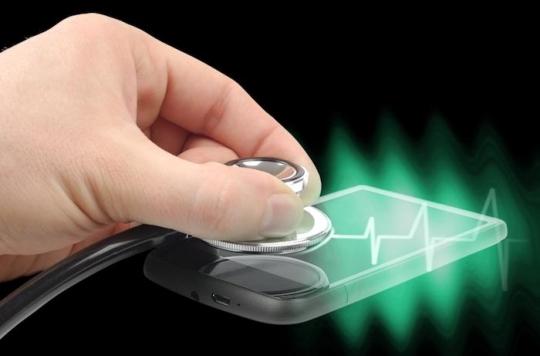According to 2 two large American studies, the risk of cancer associated with the intensive use of a cell phone is “minimal or nonexistent”. These are toxicology studies in rats and mice, which therefore tests extreme intensity and length of exposure. The extrapolation to humans of the results obtained in rats or mice will be discussed again during the final results in March.

For years, the safety linked to the intensive use of cell phones has been the subject of debate: these devices have become so important in our lives that no one is worried about the potential consequences on health. If there is even a small risk, there could indeed be consequences for millions of people.
Until now, the dreaded brain cancer epidemic has not happened, but it was necessary to have quantified assessments. Alongside epidemiological surveillance of populations exposed to radiofrequency waves, animal toxicological studies make it possible to test the effects of intense overexposure on animal life. This is the case with 2 large studies of the American National Toxicology Program, studies funded by government, carried out in rats and mice, at very high intensity and over their entire lifespan.
Two studies and $ 25 million
In this perspective, the American government has gone all out with 2 $ 25 million studies on the effects of radiofrequency waves emitted by cell phones. Carried out over 10 years and 3,000 animals, these 2 studies are considered by specialists as the most important to date.
They made it possible to test on male and female rats and mice, the effects of different types of waves (GSM and CDMA), different intensities, and in the short term (0, 3, 6 and 9 W / kg, 5 to 7 days per week over 28 days) as long term (0, 1.5, 3 and 6 W / kg, 7 days per week over 2 years). Rodents were subjected to daily exposure exceeding 9 hours in sequences of 10 minutes over 18 hours at least, making this exposure more than intensive.
These 2 reports, presented at a press conference and made available on the Internet, confirm the results already published in 2016 which had demonstrated a slight increase in heart and brain tumors in male rats, but not in females. There appears to be an effect on weight gain and survival of baby rats at higher intensities.
A more than intensive exhibition
Rodents in the studies were exposed to the airwaves for more than nine hours a day for two years, much more than people put up with even with heavy cell phone use, so the results should not be applied directly to humans.
In male rats, studies show an increase in the frequency of a very rare tumor of the heart (a malignant schwannoma) during this very high exposure to radio frequencies emitted by phones. But this tumor is not found in female rats or in mice. There is also an increase in the frequency of cardiomyopathies in both sexes, degenerative damage to the heart muscle.
According to one of the experts at the press conference, Dr Bucher of the US National Toxicology Program, the fact that only male rats develop heart tumors may be related to chance or the fact that being larger, they absorb more radiation.
An increased risk of heart tumors
Cardiac tumors seen in male rats are “malignant schwannomas,” a tumor of the same origin as acoustic neuroma, a benign tumor of the nerve that connects the ear to the brain. It is this last tumor that some studies have linked to overuse of the cell phone.
During the press conference, the experts added that about twenty animal studies have been made on this subject, “of which the vast majority, past and future, are negative for cancer.”
Other cancers of the brain (glioma) and other organs (pituitary adenoma, pheochromocytoma, prostate adenoma, pancreas, etc.) are found to be slightly increased in the 2 studies in rats and mice, but this increase does not reach the significance threshold which statistically defines the reality of an effect or a consequence. These results are therefore “equivocal”, according to the experts at the press conference, and do not give rise to further research.
Longer survival
Unexpectedly, the 2 studies also found small DNA lesions in animals exposed to radio frequency waves (hippocampus). This came as a surprise to scientists who until now believed that radiofrequency waves, unlike ionizing radiation from x-rays, could not damage DNA.
However, these results do not call into question the very reassuring nature of the 2 studies for the experts, especially since, at the same time, it appears that the rats exposed to the radiofrequency waves of the mobile phone lived longer (48 to 69% 2-year survival) than controls (28% 2-year survival). According to Dr Bucher, one possible explanation for this lengthening of the lifespan is that the radiofrequencies could fight against the chronic inflammation which causes a kidney disorder common in rats as they age and which can kill them.
No major risk in the end
Other experts, however, felt that, even if they were ambiguous, these results are worrying and should lead the government to reassess and tighten the limits it imposes on the quantity and type of radiofrequency waves that mobile phones can emit.
The Food and Drug Administration, the US National Institute of Health, has published a press release stating that she was taking into account the results of this toxicology research program, that she had quizzically reviewed the many other studies on cell phone safety and that she had “not found sufficient evidence on the existence of adverse health effects in humans within the current authorized exposure limits for radiofrequency waves ”.
Dr Jeffrey Shuren, director of the devices and radiofrequency division of the FDA, also said, “Even with frequent daily use in the vast majority of adults, we have not seen an increase in the frequency of brain tumors.” .
Advice to reduce possible risks
For people who are still worried about a possible risk associated with cellphones, health officials offer the following advice: limit cellphone use, use a headset or speakerphone mode to avoid rest the phone on your head, avoid downloading large files with the phone against your ear and, above all, avoid calling if the signal is weak. This is because the radiation emitted by the phone increases when the users are in places where the signal is weak because the cell phone then emits a stronger signal to connect. Other experts also advise carrying the phone in a backpack, briefcase, or purse, not a pocket, bra, or belt pouch.
The reports released Friday for public consultation are drafts and a detailed analysis by independent experts is expected in late March.

.

















